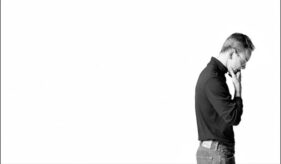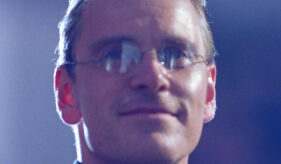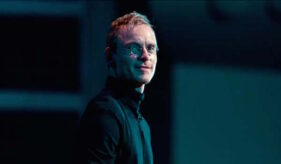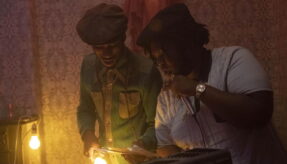Film Review: STEVE JOBS (2015): A Strong, Kinetic Version of Events [NYFF 2015]
Steve Jobs (2015) Film Review from the 2015 New York Film Festival, a movie directed by Danny Boyle, and starring Michael Fassbender, Kate Winslet and Katherine Waterston.
Many things have been written about Steve Jobs. He’s been mythologized – now an immortalized figure in pop-culture and tech history, his legacy looms large over any project centered around him. He’s a legend to some, dismissed as an asshole by others, but his contributions (no matter how hands-on you decide he was) are glaring and around us on a daily basis. His mission statement was a simple, tangible want: to put intuitive tech in the hands of everyone, adding to the world by allowing others to add to it. An idea which Aaron Sorkin (having adapted Walter Isaacson’s biography of Jobs) and Danny Boyle symbolize and reiterate throughout the film.
There seems to be no honest way not to mention the Aaron Sorkin adapted Ben Mezrich book, “The Accidental Billionaires” turned David Fincher masterpiece, The Social Network (2010), when contextualizing this project and the similar themes of humanity in tech. It’s taken a while for Steve Jobs to find its shape. Fincher was attached at one point with Christian Bale unexpectedly relinquishing the lead role in an unheard of move from the actor, stating he wasn’t right for the part. If this is news to you, worry not – the final form is a fairly good one, with Danny Boyle’s kinetic energy beautifully matching Sorkin’s staccato poetry and the actors being of such strong pedigree that there was simply no way this wouldn’t be solid.
The film is jam-packed, with the familiar ‘Sorkenese’ language blasting us through and a dynamism from Boyle that really makes you wonder if he wasn’t more suited than Fincher for much of the exhilaration on display (which is not to say Fincher wouldn’t have made the darker, emotional troughs of the film feel as empty and crushing as they should’ve been). Though the actors make the film’s language work beautifully, there are a few beats – emotionally serious beats – that Aaron Sorkin’s witty relief deflates all tension from. It’s a tightrope, that line between letting a serious situation linger, and collapsing it quickly to move on to everything else that needs to be covered. Generally, though, the film flows perfectly, and the aforementioned cancellations of emotion aren’t overbearingly frustrating.
As you may have heard, the conceit of this film’s structure is a fairly exciting one: Aaron Sorkin, in lieu of following the footsteps of all biopics ever and rehashing yet another cradle-to-gave structure, decided to frame the film around three major keynotes of Jobs’ career. These three acts are each filmed with a different camera, as to further immerse us into the timeframe of what we’re watching. Detail, subtle but important, for the maximum possible experience – a Jobs trademark, Boyle offering us one of his own with this technique. This three-camera method may have come off as a marketing tool or a superfluous stylistic choice, but it really does work terrifically. It not only doesn’t take you out of the film by imposing itself, but it takes you deeper into it by immersing you more. 16mm gives us a clean but grainy look at Jobs’ Macintosh keynote, soft 35mm takes us to 1988 and Jobs’ time working on NEXT, while pristine HD footage concludes the unveiling of the iMac in 1998.
We’re ushered into the film around 9am on keynote day. It’s 1984 (the film lets us know by employing the iconic, familiar and nostalgic “Chicago” type font, created that same year and used by Apple until 1997) and Jobs has only a few minutes left before the house opens and the keynote begins. Time is of the essence, and punctuality is of the utmost significance to this man (“We can’t be late. We’re a computer company”). Jobs is violently harassing his employees to fix a terribly important bug in the next few minutes. The Mac is supposed to say “hello”. It’s not working, and it better – or Jobs will publicly shame his primary software architect, Andy Hertzfeld, in front of a packed house.
Jobs sees this behavior as an end-justifying mean. After all, he has now motivated Hertzfeld sufficiently to fix the issue, which is what actually matters. If the Macintosh doesn’t appear friendly (helped by the floppy-disk slot shape resembling a goofy grin) and say “hello” upon being unveiled, the public could remain in its 2001: A Space Odyssey delirium of feeling threatened by computers (this is a different time, mind you). The Mac team is scrambling, unable to solve this time-sensitive bug. Meanwhile, Jobs – not being an engineer, designer, programmer, or developer – threatens and berates his staff without caring to understand the intricacies required of them. “Just fix it”, he says (Steve Jobs, everyone). But the point of all this is possibly the overarching theme: detail and nuance are not just detail and nuance – they are the big picture. And Jobs is masterful at prioritizing minutia and the product itself over people and their boring issues and obstacles of personalities.
This all-encompassing trait of the film and Jobs himself unravels over the course of the narrative. Obsession has led him to a type of narcissism, excused by ‘vision’ and ‘genius’, but leaving the people closest to him tossed aside or emotionally destroyed in his wake. Jobs’ former girlfriend and daughter are at the top of that list, and Katherine Waterston does an incredible job of exhibiting the overpowering emotional distress this man has put her through. Hers is a performance without affectation, and most importantly, it presents us with a human face on her husband’s ugly inhumanity and repressed feelings right off the bat. Its her who lets us know – from the very beginning – that this is not another mythologizing of Jobs (at least not as binary of one as it could’ve been).
Danny Boyle’s colorful, frenetic style is in full effect here. Dutch angles, super-imposed text and footage paralleling the dialogue, the various cameras used throughout, the airtight editing, and perhaps most subliminally – the music – it all comes together swimmingly. The score is very effective at times, though there are a few moments when it might be too direct and obvious (unlike, say, the score to The Social Network). It’s yet another tricky line to walk, as Boyle’s usage of music here is a somewhat symbolic gesture to the further innovations by Jobs and necessary to bolster the themes. “A thousand songs”, he tells his daughter, eager to rid her of the gigantic walkman she lugs around by replacing it with something “civilized”. Boyle plays with this in more subliminal ways, too. Overhead shots of glass tables, lit up from below, with colorful post-it notes atop – resembling the very user interface that Jobs’ iPod and iPhone would employ (the post-its looking like apps). Sleek mirrors and clean screens, 16:9 ratios surround Jobs over the course of the film. It’s nice to see Boyle find quiet was like these to convey his ideas, alongside his usual, expected kineticism.
Michael Fassbender is an absolute phenomenon. He is the most professional, captivating leading man of our time. That he doesn’t physically resemble Steve Jobs is a hurdle far lower than you might placed it at. What matters is his ability to portray the ideas and emotions on paper, and I’m at a loss at finding someone on his level besides Christian Bale. And it is moments when Sorkin, Boyle, and Fassbender’s talents all reach peak levels simultaneously, when the ideas written down are visualized perfectly and the actor on-screen nails the point of it all, that Steve Jobs really comes together. Jobs riding in an elevator, trying to turn down the the volume of his life before giving a presentation, while 2,600 copies of TIME magazine (with a PC on the cover instead of a Mac) tower around to him. There are some great moments in the film (the confrontation between Fassbender and Jeff Daniels being the major, tragic crescendo) and it barely lets up to let you count them.
The visual style and rapid-fire language of the film makes this a thrilling, powerful experience. You can’t take your eyes of Fassbender and hang on every word and gesture made by everyone on-screen. Every detail matters, and you’re in Jobs’ head for the duration. It’s exciting, and a captivating series of ups and downs to take part in. Steve Jobs is portrayed as a man waiting for technology to catch up to him – not the other way around. He has no time to idle, to care for people’s emotions or objections. Get out of the way, or help me invent the future. Sorkin and Boyle leave it up to you whether or not Steve Jobs earned the right to treat others as he did. It’s fascinating, engaging and utterly entertaining to be there alongside his decisions, whether we approve of them or grimace in objection and enthralled curiosity.
Rating: 9/10
Leave your thoughts on Steve Jobs and this review in the comments section below. For more film reviews, visit our Movie Review Page, our Movie Review Facebook Page, our Movie Review Google+ Page, and considering subscribing to us by Email, “following” us on Twitter, Tumblr, Google+, or “liking” us on Facebook for quick updates.
Related Articles
FilmBook's Newsletter
Subscribe to FilmBook’s Daily Newsletter for the latest news!

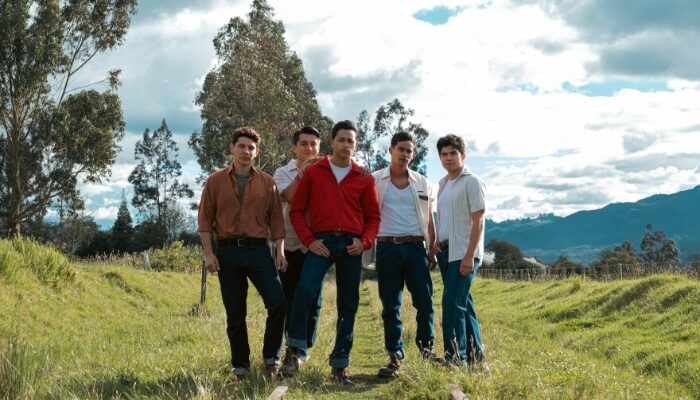
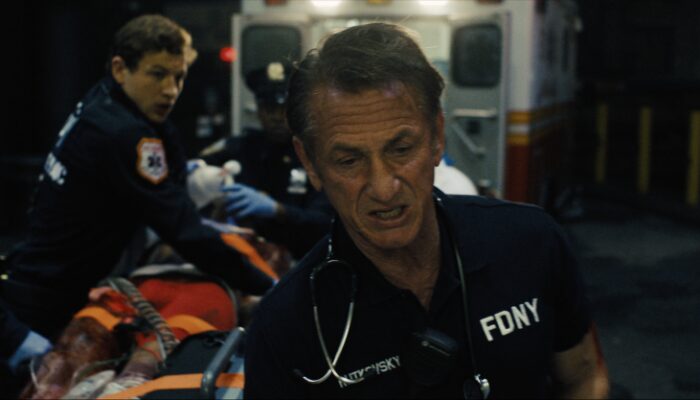
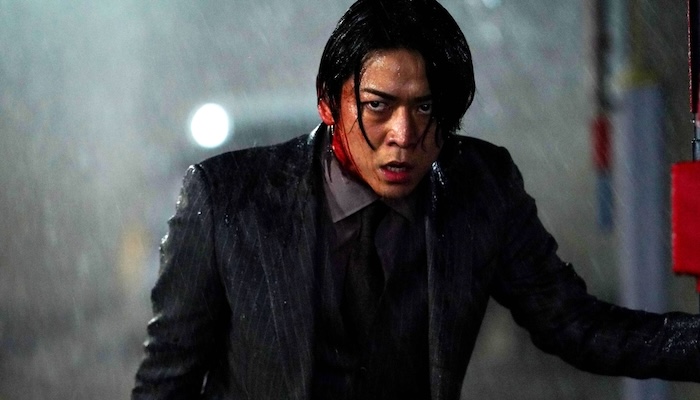
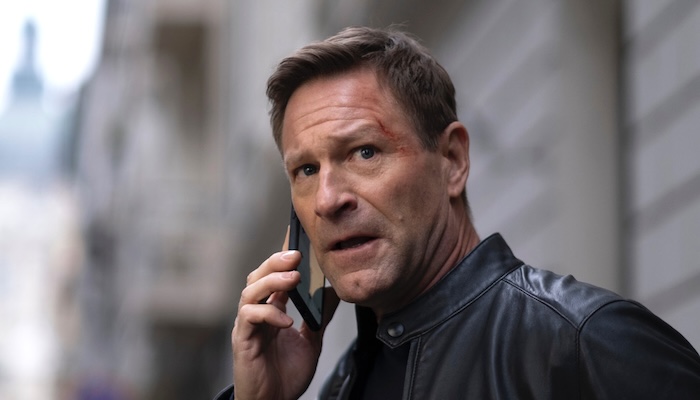
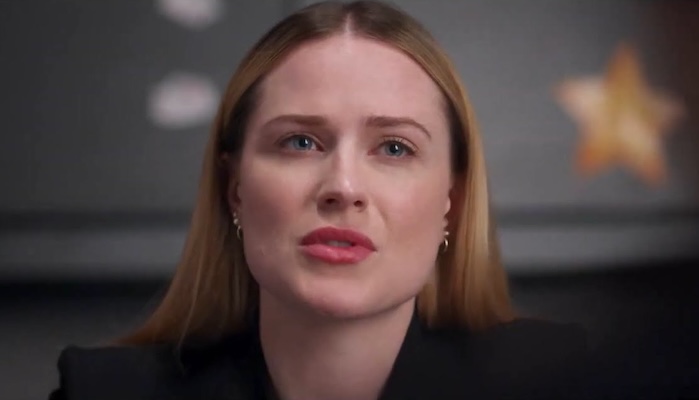
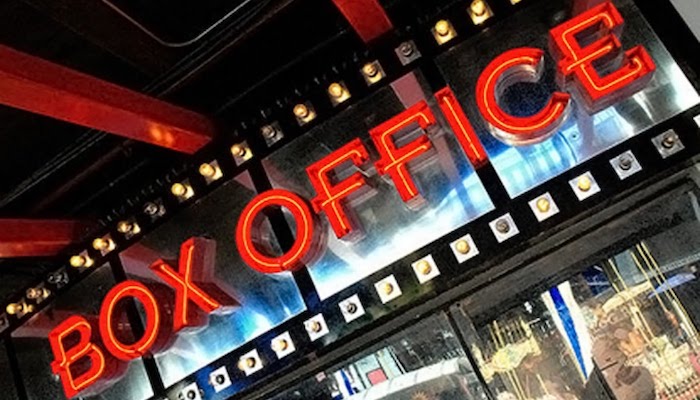

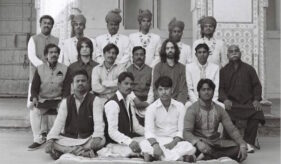
![Carol Review [NYFF]](https://film-book.com/wp-content/uploads/2015/09/cate-blanchett-carol-review-01-600x350-281x164.jpg)
